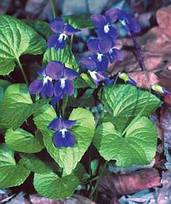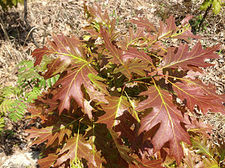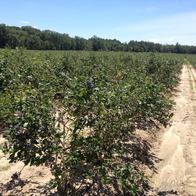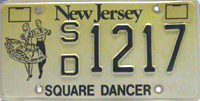-- State Symbols
|
|
* Home
|
 Common Meadow Violet (Viola sonoria). Image: National Park Service Common Meadow Violet (Viola sonoria). Image: National Park Service
The Common Meadow Violet (Viola sororia) was officially designated by the state legislature as the state flower in 1971, although prior attempts were made in 1913 and 1963. The Common Meadow Violet is the most common of over 400 species of violets and is found growing in marshes, damp woods and along roadsides. From March to June, it produces small blooms ranging in color from white to blue to purple on separate, slender stalks. The flowers extend from Paterson to Atlantic City in the south. Illinois, Rhode Island and Wisconsin also have the violet as their state flower. New Jersey also hosts several public arboretums. The Garden Club of New Jersey provides information on gardening activities relating to New Jersey, as well as a listing of 120 local clubs with 5,000 members. The New Jersey Agricultural Experiment Station at Rutgers University conducts research and publishes information on resources and common problems relevant to gardening in the state.

The horse was named as the State Animal by a Joint Resolution approved by the Legislature and signed by Governor Brendan Byrne in 1977 which followed a lobbying campaign by elementary school students and equine advocacy groups. The horse's significance in the state's history is illustrated by the inclusion of a horse's head prominently displayed at the top of the State Seal. Until being supplanted by the motor vehicle in the first decades of the 20th century, the horse was the dominant means of transportation and of providing power for agricultural cultivation. Based on the most recent data of a study conducted in 2007, New Jersey had some 42,500 equine animals, with some 30% engaged in racing activities. The state's racing industry, with major tracks at The Meadowlands, Freehold Raceway, and Monmouth Park has been in long-term decline, primarily due to competition from casinos and other forms of legalized gambling, aging of the demographic of racing enthusiasts, and the growth of other leisure and entertainment offerings. Although New Jersey breeders have increasingly cited declining state-subsidized purses as undermining their competitive position with tracks in nearby states in attracting high-quality horses, the state continues as the site of the Hambletonian Stakes, the first event in the Triple Crown of Harness Racing for Trotters held since 1981 at the Meadowlands, and the Haskell Invitational at Monmouth Park, which annually attracts some of the nation's leading thoroughbreds. Apart from racing, horse farms also have been impacted by development pressures and increased operating costs, including taxes and liability insurance. Resources related to horses in New Jersey include the state Department of Agriculture, which maintains an Equine Advisory Board of representatives of diverse segments of the equine community; the New Jersey Racing Commission, which regulates tracks, trainers, jockeys and other personnel; the New Jersey Horse Council, a nonprofit advocacy and lobbying group incorporated in 1974; and The Horse Park of New Jersey, an 185-acre equestrian facility in Allentown which hosts many events and competitions. New Jersey also serves as the home base of the United States Equestrian Team, which is located at 180-acre Hamilton Farm in Gladstone, the former property acquired in 1911 by Wall Street financier James Cox Brady; the Farm hosts the Team's training for the Olympics and other world championships, as well as events such as the Dressage National Championships and many horse shows, dressage, driving events and training clinics.
State dog designation adopted January 2020 pursuant to legislation honoring guide dogs trained for blind by nonprofit The Seeing Eye, based in Morristown, first established in 1929, world’s oldest existing guide dog school. Each Seeing Eye dog trained at Morristown facility before being paired with a blind individual across US or Canada. to provide mobility support and enhance independence, dignity, and self-confidence
 Knobbed whelk. Image: Wikimedia Commons/JoshuaDavisPhotography.com CC BY-SA 3.0 Knobbed whelk. Image: Wikimedia Commons/JoshuaDavisPhotography.com CC BY-SA 3.0
The knobbed whelk (Busycon carica), commonly known as the conch, is found along beaches and bays, with the shell taking its name from the large marine snail that lives in the shell. Also known by its Italian name, scungilli, the snail is harvested from its spiral shell and canned for food. The shell is yellowish gray in color and is often prized by shell collectors. Of the 14 states which have designated state shells, New Jersey and Georgia are the only ones with the knobbed whelk, although other whelk types are listed by Massachusetts (Wrinkled Whelk) and Texas (Prickly Whelk).
|














